#jack cavalera
Text


it happens more often than you'd think
#jack cavalera#johnny silverhand#judy alvarez#cyberpunk 2077#who started it? the world may never know#also i know they don't perfectly match up i'm sorry i'm not good at this
780 notes
·
View notes
Text




girl best friends after a couple of brewskis during a sandstorm
11 notes
·
View notes
Text
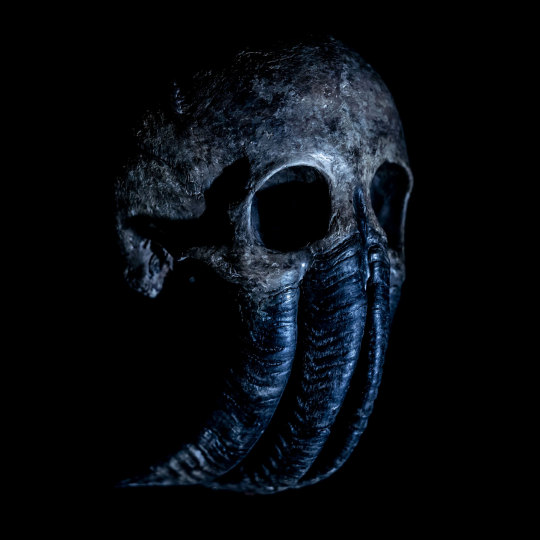
Absent in Body - Plague God (March 25th, 2022)
Countries: Belgium, United States, Brazil
Genres: Sludge Metal, Post-Metal
Format: FLAC
Lineup:
Scott Kelly - Vocals, Guitars
Colin H. Van Eeckhout - Vocals, Bass
Mathieu Vandekerckhove - Guitars, Keyboards
Igor Cavalera - Drums
Miscellaneous Staff:
Tim De Gieter - Recording, Producer
Jack Shirley - Mastering
Label: Relapse Records
Tracklist:
Rise From Ruins - 05:31
In Spirit in Spite - 08:10
Sarin - 05:57
The Acres/The Ache - 08:36
The Half Rising Man - 08:10
#Telegram#Absent in Body#Sludge Metal#Post-Metal#International#Tim De Gieter#Colin H. Van Eeckhout#Mathieu Vandekerckhove#Belgium#Scott Kelly#Jack Shirley#United States#USA#US#Igor Cavalera#Brazil#Relapse Records
2 notes
·
View notes
Text
@cavalera-eternal
Jack will not pet, but she wants to, whether she'll admit it or not.

Look at him. Look into his pleading, cute eyes. He's waiting. And you'd just let him down like that? Just disappoint him? Cruel. Cruel to Rusi'a.
3 notes
·
View notes
Note
Hey man what are your favorite bands/musicians?
Death - Chuck Schuldiner
Slayer - Jeff Hanneman
Dio - Vivian Campbell
Ozzy Osbourne - Jake E. Lee
Sepultura - Igor Cavalera
Deicide - Brian e Eric Hoffman
King Diamond - Andy Larocque
Krisiun - Max Kolesne
Black Sabbath - Cozy Powell
Obituary - Donald Tardy
Six Feet Under - Allen West
Cannibal Corpse - Jack Owen
Sepultura - Andreas Kisser
Iron Maiden - Clive Burr
Anthrax - Scott Ian
Kiss - Ace Frehley (original)
Pantera - Dimebag Darrell
There are many others, but it would be an endless list!
6 notes
·
View notes
Photo

#splitting adam#movies#nickelodeon#jace norman#isabela moner#jack griffo#seth isaac johnson#amarr m. wooten#tony cavalera#illustration#vintage art#alternative movie posters
9 notes
·
View notes
Photo
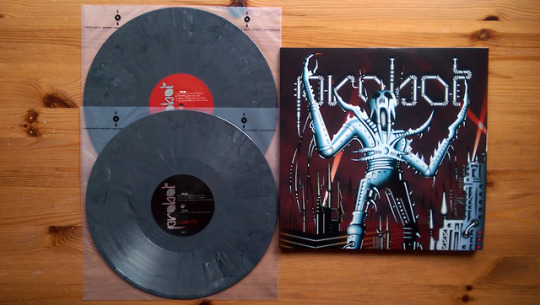





Probot - Probot | Southern Lord | 2018 | Gray Marble
#probot#southern lord#roswell records#vinyl#colored vinyl#lp#music#record#record collection#rock#metal#lemmy#dave grohl#cronos#king diamond#max cavalera#jack black
22 notes
·
View notes
Text
14x10: Destiel, Cowboys, and Pamela Barnes
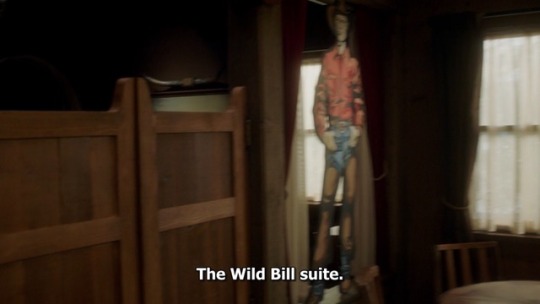
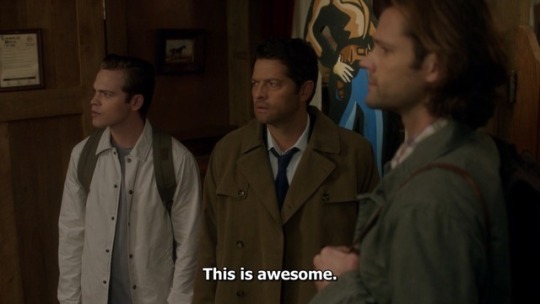

Blatant Dean/Cas-coded M/F cowboy cutouts from 13x06 Tombstone resurface again in Rocky’s Bar (Rocky & Bullwinkle; subtext: Rock Hudson, first queer Hollywood star diagnosed with HIV/AIDS), and I’m thumping the table (besides obvious meta on their intrinsic links to D/C visual narrative and what it MEANS) because firstly:
Mind!Pamela takes up female Cas-coded cowboy’s place in frame, aligning her to Cas himself, and as everyone’s discussed already, here we have Michael’s construct/Dean’s complex manifestation of Pamela the Cas mirror — dark-haired and olive skinned best friend and independent tough nut. Sounds familiar...(my full meta 14x10 review is still in progress :P but I’ll be linking this post to it!)
Dean’s mind - Rocky’s Bar itself - is an entire subconscious construct of all the various facets of his identity, both textual AND heavily (closely surface) subtextual: his bisexuality, his humanity, his deep-seated desire for human socialization represented by bars in the first place — his want for a good platonic friend, a beautiful and honest one, who fights beside him, helps him keep the bar - his most important accomplishment and dream - in order, and whom he likes flirting with.
This version of Pamela Barnes -- both Dean’s memory projection and Michael’s construct of her -- is the subconscious MIRROR of whom Dean really wants that indeed calls him out on his desires: Cas. Their dialogue held romantic connotations within a mainly romantic context (“How come you always have a boyfriend?”). Pamela = subconscious double subtextual entendre of bisexuality and Destiel.
Mind!Pamela tells him “You don’t want me - you just like to flirt,” and his curtain of performativity is indeed drawn back. It’s true! Dean likes to flirt. He’s naturally charming, and he tickles the fancy of every person - man and woman - who crosses his path, but recall everything else we know about Dean Winchester, where his natural behaviour is used to: A. gain traction for a case, or B. grab him casual flings (that can also be abused as an unhealthy coping mechanism re: Burying-My-Problems) where he gets drunk, shackles up, and says adios the next morning; his semi-serial monogamy (and his penchant for threesomes/fivesomes *yes, including the M/F Doublemint Twins and almost-textual super overt M/M/M/M/M Drowley*) is a temporary substitute for chasing after long-term romantic attachments that are “unacceptable” in the LifeTM. Pain, horror, and death, like his old man dictated, in that romantic attachments are nothing but a hindrance. I digress—
Mind!Pamela (Michael) was able to see through him and his performativity. Dean is content that she, a psychic who “kinda knows” -- who can distinguish his truths and lies -- is someone whom he feels no obligation to perform for. He can embody the non-repressed version of himself.
The multi-layered D/C take home message: Michael knows who Dean wants. Again, in an evocative Empty-parallel manner, Michael knows “who you love, what you fear”, and it is the angel, now more humanized than ever. Cas is the antithesis of Michael and the one who strikes the balance within Dean’s life course.
Quick aside - how about Dean’s role in Cas’ narrative? Without sounding redundant, I’ll briefly talk about balance.
Dean facing Michael - who took Dean’s visage --> “I Am You” definitely called back to severely broken 5x04 Human!Cas and 13x21 AU!Cas. Cas’ Dark mirror selves outlined the visual/narrative dualism of Cas’ fragile personal nature: the two extremes on either ends of Cas’ identity spectrum: Dark Angel vs Dark Human. Dean Humanity and Free Will Winchester strikes his personal balance. Knowing Dean balances Cas’ personal nature. Through Dean, Cas has discovered kinship. Family. Free will. Love.
AU CAS: You’re aligning yourself with the humans.
CAS: I vastly prefer them to angels.
AU CAS: Don’t think you are better than me. We are the same.
CAS: Yes.


x
Both 13x21 AU!Cas and Cas were already lost to Heaven (under their pre-existing internally rebellious human streak/inclination for Humanity), but unlike AU!Cas, he was guided –> found, in every sense of the word, by Dean.
14x10 echoed 13x21 via Michael!Dean vs Dean in that Dean has what Michael does not: meaningful interpersonal relationships that can drag him back from the brink of dark extremism.


x
(Cas needs you to come back, Dean.)
Dean has found freedom through Cas. Self-acceptance. Happiness. Love and...Love.
What Dean still perceives, however, is that he is unworthy of Cas, which Pamela the Cas reflection points out: “How come you only want what you can’t have?”. Dean wants Cas, and he is fully cognizant and self-aware of that fact. He searches for the rainbow endlessly, but he’s uncertain…afraid of the wind’s flow (and his internalization of low self-worth remains --> he believes “all good things come to an end”. Temporary contentment, where he’s undeserving of such good things as epitomized by real estate woman who wants to infringe on Dean’s property/dream; ‘sell it out’ literally and figuratively).
Either Dean will find his pot of gold waiting for him, or he won’t, and this is the underlying star-crossed literary beauty of the D/C narrative.
Dean’s sick of pretending. He WANTS the wind to show him the way, but we must remember that, in an episode rich with the concept of authorial authority - writing your own fate and ever-glaring Free Will - he NEEDS to blow the wind himself. If he just allows himself to believe that he can have true happiness, then he will.


Secondly, we see Dean and Cas distinctly occupy the visual spaces of their counterpart in both 13x06 and 14x10 (you can also see phallic Space Cowboy aka Cosmic Cowboy in the first frame), subtextually interlinking the episodes together in continuous Destiel narrative symmetry.

And the bar is further decorated by bisexual hues of blue, pink, and purple, with the M/F cutouts serving as an additional silent manifestation of Dean’s bisexuality (mind you, overall Rocky’s Bar was swimming in queer subtext, but I won’t go too far into it here; I have my 14x10 review for that).
You’re not truly alone, Dean. You have Sam and Jack.
And Cas is there for you. *hello two fish fixtures; Cas = Fish* (I lack a screengrab).
Cas will look for you, and he will find you, and he will fight for you, and he will support you, and he will take care of you, and he will freely make sacrifices for you, because you’re more than strong in his eyes.
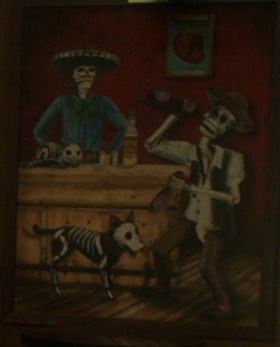
Two cowboys. Two beers ((romantic) bonding connotations: Heart and Home). The HEART painting in a painting in a dream setting -- THE DREAM Dean wants, which lends him contentment. Full circle.
@coinofstone also points out the cavaleras Dean = Dog meta juxtaposed by Cas = Cat united within a domestic partnership, which absolutely gets me goin’! *serves cake*


x
Cas has your heart, Dean. And you have his.
Silent storytelling by Yockey/Wanek, ladies and gentlemen.
(13x06 and 14x10 skeleton painting screengrabs by @coinofstone; 14x10 by @ravenscat-tumbler)
#my stuff#THERE IS SO MUCH MY FRIENDS#my meta#supernatural#spn s14#14x10#destiel#narrative#silent storytelling#this is a yockey appreciation blog#this is a wanek appreciation blog#this is a dabb appreciation blog#dean is in love with cas#Season Who Am 14#pamela barnes#13x06#parallels#Reflections#the greatest love story ever told#cas is in love with dean#character development#long post for ts#13x21#spn s13#dean winchester#castiel#deancas#narrative symmetry#WANT VS NEED#bisexual dean
220 notes
·
View notes
Text
The Groove Guide - Reviews 2008

The Prodigy - Experience Expanded/More Music For The Jilted Generation
With the advent of British big beat/hard dance merchant's The Prodigy's fifth studio album, released by their new record label Take Me to the Hospital, it was inevitable that XL Recordings and Maverick undertook the same treatment EMI gave Radiohead and Capitol gave The Vines in releasing previous albums to capitalize off their success. However, rather than a traditional "Best Of" compilation which, well, has already been done, the shrewd move was to re-master two albums which helped both shape the big beat scene and redefine techno and rave with added b-side and live track bonuses.
Experience and Music For The Jilted Generation both became important albums for the dance music scene; where Experience expanded upon early rave culture and fused jungle and techno with tracks such as "Out Of Space" and "Everybody Into The Place", both remixed and contained on the "Expanded" section of this re-release, it's ...Jilted Generation which provided a crossover between the underground to their critically and commercially acclaimed Fat Of The Land; the edgier, almost industrialized sounds emanating from "Break & Enter", "Their Law" and the Nirvana-sampling "Voodoo People" bridging ravers and rockers into the Big Beat sound that sculpted the likes of The Chemical Brothers, The Crystal Method and Fatboy Slim and gave birth to what we now know as 'electronica.'
B-Sides from their single releases, live tracks from their most recent stints at Pukkelpop and remixes from Dust Brothers, the real reward is the re-mastering of the songs and highlighting that despite today's standards highlighting fluro, glamour and fashionista sensibilities, it never needs to be that way.
Los Campesinos - Hold On Now, Youngster
If you're not really a fan of twee, this may change your mind. Welsh sextuplet Los Campesinos have been making an impression within the 'indie' scene, but rather that come across sophisticated and potentially haughty, the group have a power-pop element which comes across as fun. Catchy, with the ability to muster a smile upon the face of anyone (case point - "You! Me! Dancing!), Hold On Now, Youngster... is nigh on flawless and is once again more proof Wales, who have provided a number of influential acts in the past two decades, are doing something right nurturing their countries music scene.
Akaname - Filthlicker
The internet seems to heavily favour bands of Akaname's variety for good reason - while mainstream outlets omit such "radio unfriendly" one might be inclined to state as being on "Filthlicker", the internet and it's at times quite staunch view on bands place emphasis on talent rather than aesthetics. What we have with Filthlicker is a band who are mixing one part The Dillinger Escape Plan with five parts The Black Dahlia Murder to a great accord. New Zealand's music scene has just been hit with another metal(core) slug to its chest – one that'll be fired on April 11th at Oblivion in Auckland.
Goodnight Nurse - Keep Me On Your Side
Goodnight Nurse seem to have turned a trick used by Blink 182; from that bubblegum-esque pop they once honed during their "Always and Never" era, there seems to be a more serious straight-ahead approach to the band. Almost breaking away from the quasi boy-meets-girl, girl-breaks-boys heart formula their new album makes them sound a little less New Found Glory and, strangely, a lot more like Homegrown and their 'darker' punk rock. An apt analogy would be to compare their work used in a Judd Apatow movie rather than a high school comedy akin to American Pie. "Drift Away" perhaps the standout track on the album, with "Lay With Me" there for older fans as not to alienate them. Definitely a goodnight rather than a goodbye from the boys.
Otep - The Ascension
Otep were one of the bands that during the golden age of nu-metal at the start of the 00's passed through with both relative success and, more importantly, a deal of anonymity - though they had their fans and were very much "Kittie for the thinking man", they escaped the scathing retrospective views because, sadly, people couldn't have cared less. Their latest effort retains those nu-metal sensibilities while the vocals pulling away from relentless screaming, and where the oft compared Jack Off Jill or, for some reason, Arch Enemy, found their transitional period turbulent, Otep manages such a thing near graceful. It helps, also, they pull off a Nirvana cover with justice.
Satyricon - The Age of Nero
Satyricon is an interesting little quandary - though superficially resembling all the aesthetics of a black metal act, they've caused quite the controversy after the release of Now, Diabolical was cited as being "radio-friendly" amongst hardened fans of the genre. Funny how Norway's equivalent of a Grammy can do that to you...
However, The Age of Nero retains the hallmarks you would commonly expect from a band of their kind; the high pitched death growl, the bleak outlook within Satyr's lyrics. Unlike other black metal acts, there is a groove involved within their sound, rather than blunt force trauma - 'The Wolfpack' melodically could seat well at home with Dirt era Alice In Chains while 'Last Man Standing' could be a Down b-side, all the funnier Phil Anselmo is rumoured to be working with the band.
The black metal fan in me is reluctant to give it a high rating because it's not essentially an album of that kind. But the general metal fan in me concedes it's a brilliant piece of work and, as taboo as it could be amongst the community, is actually very accessible and at the end of the day, isn't that more important to a movement?
Emigrate - Emigrate
Touted as being "industrial metal" and including remixes from Mr. Digital Hardcore himself Alec Empire, the side project of Rammstein's Richard Z. Kruspe sounds like a delectable and, dare I say it, heavy affair. Instead, Emigrate treats us to generic, radio-friendly tracks which you would hardly expect given Krupse's CV. In fact, it seems offensive to even believe this would come from such a person – almost as if the creativity from the German group has finally diminished (let's be honest though, Rosensot wasn't exactly their edgiest, was it). Bland, devoid of anything challenging, it would seem that the aesthetics were more important than the music and by far this is little more than a vanity project for Krupse.
The CHASE - Paranoia
When it rains, it pours. 2008 definitely seems to be the year in which New Zealand's hardcore scene emerges out of the woodwork finally to the acclaim it deserves - none more so than The CHASE, who channel the spirit of good post-hardcore that emanated out of the US underground scene circa. 2002-2004. In fact, with songs such as "The Seconds" and "Boomers", you could have easily mistaken them for a band on early Drive-Thru or Victory Records. Short (the album runs little over half an hour) but both melodic and aggressive, The CHASE are like a double happy; though they make not look it, they can induce a large amount of unexpected splendour. How's NZ DIY hardcore scene going to lay siege once more throughout 2008? With bands The Chase leading the charge. Corporate punk rock stops here.
Franz Ferdinand - Tonight
Doth my ears deceive me, or have Franz Ferdinand taken a page out of KISS' playbook and decided to craft a disco song or two? Though where the old aged outlaws alienated the KISS Army with their experiment, Franz Ferdinand has not - there's always been that dance party element within their previous releases and Tonight is no exception. It, however, seems like the band have been caught in a zeitgeist of electro-new-wave eighties - songs like 'Turn It On' and 'Send Him Way' almost seem homages to Synth godparents The Human League, Alex Kapranos and company even seem determined to summon the spirit of Saturday Night Fever with 'Live Alone'. Though it might seem like committing commercial suicide, the thing is Franz Ferdinand have always been eccentric, and their idiosyncrasies are their strengths. Tonight is a record you might be ashamed to admit you'd like, but you will like it... embrace your fear.
Cavalera Conspiracy - Inflikted
There's been a wait in the metal community for the mighty return of influential metal act Sepultura. While that prophecy may not come to pass, Cavalera Conspiracy reunites brothers Max and Iggor Cavalera after too long of an absence. What you'd expect is something loud, noisy and aggressive, and truth be told, that's one extent of the album. The other is the groove that made Sepultura so popular, with well crafted if deceptively simple riffs that command the ability for even a casual rock fan to nod their head. Another bullet fired from the metal scene in 2008 – Inflikted is part Nailbomb at times and at others Arise-era Sepultura, but a huge return for the brothers Cavalera.
The Naked and Famous - No Light
Was it rushed? That's the sceptical question posed as The Naked And Famous release the follow up to This Machine in what does feel like a very short space of time. Though many who may not have listened to the group cite that they are simply another electro band flooding Auckland's musical landscape, they couldn't be more wrong. Dirty basslines, distorted guitars, the tracks play out more industrial than electro - leadoff single "Birds" almost a nod to With Teeth era Nine Inch Nails and the sultriness of early Garbage. Second record syndrome? Powers and company taunt it... and leads us into eager anticipation for their debut long-player
Soulfly - Conquer
Max Cavalera has had quite a busy 2008 - earlier this year we saw the long-awaited reunion with his brother Igor conjuring a zeitgeist of prime Sepultura days with his side project Cavalera Conspiracy and now the sixth instalment of Soulfly, the group he formed shortly after leaving the thrash/groove metal outfit he made his name with. With that in mind, was it ever going to be an easy feat juggling his main band with a project many of us metal fans have waited years to see? The answer isn't an easy one and leaves many sitting on the fence.
Conquer rather than becoming a continuation of the heavier hitting sounds the group gave us with their previous release, Dark Ages, with it's throwback to albums reminiscent of Arise, combines those elements with the groove metal which brought them to such acclaim with their sophomore album Primitive. Though it's an eclectic prospect on paper, sadly in practice it comes across a little disjointed and does beg the question if now Igor is in the song-writing midsts that Soulfly becomes now a second thought to the newer Cavalera project.
.
2 notes
·
View notes
Text
Absent In Body (Current and former members of Amenra, Neurosis, Sepultura) Announce Debut Album, Plague God, out March 25th
Watch a music video for first single “The Acres/The Ache” now.

ABSENT IN BODY make their Relapse Records debut with the terrifying new album Plague God, out March 25, 2022 on LP/CD/CS/Digital (pre-orders available here).
Featuring current and former members of AMENRA, NEUROSIS, and SEPULTURA, Plague God is bound by the same ideals of unity and fearlessly uncompromising honesty of expression that have driven their respective bands to imperious heights of reverence and groundbreaking sonic deliverance. Plague God is by turns devastating and sublime, drawn from musicians for whom life and art are inextricably bound.
Mathieu Vandekerckhove comments:
“We had not imposed any limitations or boundaries on ourselves to create this music.
Everything happened without any compromise, we gathered and let inspiration run freely.
It is the beauty and the strength of this album.”
Iggor Cavalera comments:
"It feels great to collaborate with such forward-thinking minds like Colin, Mathieu, and Scott on AIB. The music is dense and slowly brutal, very similar to the times we are living."
Watch (+ share) Absent In Body's "The Acres/The Ache" here.
“The Acres/The Ache” music video was filmed and edited by Mathieu Vandekerckhove.
Plague God track listing:
Rise From Ruins
In Spirit In Spite
Sarin
The Acres/The Ache
The Half Rising Man

MORE INFO:
In an era overrun by information, misinformation, unseen algorithms and viral contagion, to seek out what’s truly human in the face of overwhelming and unfathomable forces has perhaps become our most sacred of tasks. It’s an impulse that lies at the very heart of Plague God, the debut album from Absent In Body – the oppressive, industrial-driven collaboration by members of AMENRA, NEUROSIS and SEPULTURA. Bound by the same ideals of unity and fearlessly uncompromising honesty of expression that have driven their respective bands to imperious heights of reverence and groundbreaking sonic deliverance, Plague God is by turns devastating and sublime, drawn from musicians for whom life and art are inextricably bound.
Initially the brainchild of AMENRA guitarist Mathieu J. Vandekerckhove, and NEUROSIS vocalist/guitarist Scott Kelly, ABSENT IN BODY formed in 2017. Immediately recognising their kinship, and with AMENRA frontman Colin H. Van Eeckhout brought in on vocals and bass, what emerged is a reflection of the intervening years of turbulence, extending it's scope as it navigates across five stretches of unstable terrain. From the opening “Rise From Ruins” with ex-Sepultura drummer, Iggor Cavalera’s tribal beat emerging from foreboding, near-subsonic oscillations to explode in a tide of corrosive riffs and feral howls, through “Sarin’s” steadfast, procession-through-purgatory groove, to “The Half Rising Man’s” matrix of organic/mechanic evolution, it’s an album in constant dialogue between the animalistic, the human and the industrial, and a hunger to distill a truth, something unpolluted from the fray.
Protest music is often perceived as a petition, or a counter-argument against a controlling force. There is another sense of protest, though, that of a machine under stress: articulating the pressures weighing down on it by means of an involuntary, primal response. It’s these states of critical mass at which we must truly find ourselves, under duress maybe, but unblinded and alive. Plague God doesn’t just give voice to these moments of truth, but in the band’s deep kinship integral to every claustrophobic judder, every stretch of atmospheric dread and helpless alias assumed, lies a freedom we both forget and attain at our peril.
Recorded and produced by Tim De Gieter, Much luv studio BE
Mastered by Jack Shirley, Atomic Garden USA
FOR MORE INFORMATION ON ABSENT IN BODY VISIT:
INSTAGRAM | BANDCAMP
0 notes
Text


sometimes you just gotta stop and take in the scenery
63 notes
·
View notes
Text
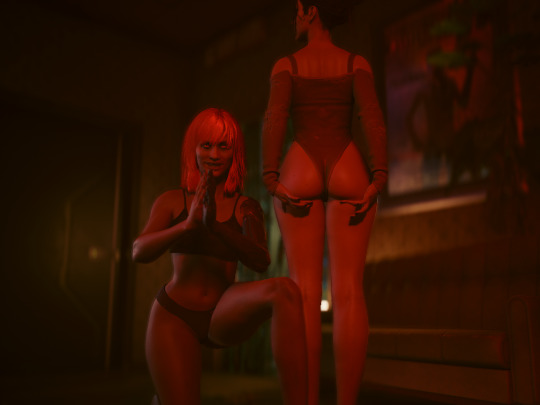

happy sinday everyone
7 notes
·
View notes
Text
RKK BRASIL ► Le Grand Remix [4/6]
Sur le marché intérieur, les choses sont bien différentes. Mais pour cela, nous allons reprendre le fil du temps là où l’article « Puissance de la musique » en est resté, en 1982. Un flashback par décennie, pour voir que la fin du régime militaire (en 1985) achève de libérer beaucoup d’énergies.

LES ANNÉES 80 ► OUVERTURE TOUS AZIMUTS
La décennie brésilienne qui s’est ouverte est boiteuse : plus tout à fait dictature mais encore régime militaire, censure en veilleuse, mais point abolie, droit de grève toléré mais pas libéré. Le président est encore un général, João Figueiredo. Celui qui, dit-il, « préfère l’odeur des chevaux à celle des masses » et qui, interrogé sur ce qu’il ferait s’il gagnait le smic local, a répondu : « Je me tirerais une balle dans la tête. » Ça donne la dimension du bonhomme.

On sent comme un flottement avec ce retour inéluctable à un régime civil. Le prochain président sera élu, certes, mais par les députés et sénateurs, réunis en congrès. Pas de suffrage universel. Du moins pas encore. Alors se met en route une campagne pour les élections directes (« Diretas Jà ») qui est l’occasion de grands raouts sur les places publiques où se côtoient politiciens et artistes. Ceux-ci sont archi-présents, ainsi Chico Buarque, dont la chanson « Vai Passar » est la bande-son. Mais les généraux ne cèdent pas là-dessus. Les élections directes, ce sera donc pour plus tard.
youtube
Tancredo Neves, opposant (modéré) au régime militaire, est élu président le 15 janvier 1985. Le premier président civil depuis… 1964. Collision incroyable de l’histoire, son élection tombe au beau milieu du premier festival Rock In Rio (du 10 au 20 janvier) à Jacarepaguà, près du circuit de F1. Un million et demi de spectateurs en dix jours, une affiche hallucinante qui défouraille en tous sens : Queen, George Benson, B-52’s, Al Jarreau, Iron Maiden, AC/DC, James Taylor, Nina Hagen, Rod Stewart, Yes, Ozzy Osbourne !!! Plus Gilberto Gil, Rita Lee, Alceu Valença et beaucoup d’autres stars du Brésil. Le lendemain de l’élection, le même jour, grand écart : je tourne pour la télé française une séquence avec l’excentrique Nina Hagen sur le toit du sambodrome (l’avenue du carnaval), puis, deux heures plus tard, j’interviewe pour Libération l’homme considéré comme le plus puissant du Brésil, Roberto Marinho, le boss de T.V. Globo, qui m’explique qu’il est largement responsable du retour à la démocratie (hum !)… mais ne s’intéresse pas à Rock In Rio. On s’en serait douté. Et le soir même, au Circo Voador (le cirque volant), haut lieu de l’alternatif, au centre-ville de Rio, James Taylor chante la liberté (formellement) retrouvée devant un public installé jusque sur la scène… Quelle journée !!! En fait, Tancredo Neves tombe gravement malade le 15 mars 85, veille de son entrée en fonction, et meurt un mois plus tard. Scénario plus improbable qu’une telenovela. C’est José Sarney, le vice-président, un civil conservateur poussé par les militaires, qui prend sa place. La (vraie) démocratie, ce sera pour plus tard.

Et le rock nacional (made in Brazil), dans tout ça ? Mal vu lui aussi des militaires, il est en veilleuse depuis Raul Seixas le fantasque et les Os Mutantes Tropicalistes. Il explose dans la seconde partie des années 80. De partout, comme une marmite incontrôlable à ébullition. Bien, c’est comme ailleurs, un « marché » à destination locale. Vous en connaissez, des groupes de rock français qui ont conquis le monde ? Au Brésil, le rock est en orbite, de São Paulo à Brasilia, en passant par Rio et Porto Alegre (place forte parce que proche de l’Argentine, réduit rock depuis… les sixties !). Millions de disques vendus (RPM, limite pop), et parfois de public comme Capital Inicial et Legião Urbana, un million de spectateurs dans leur fief de Brasilia : le rock bouscule ladite M.P.B. (toujours Musique Populaire Brésilienne, donc la chanson) par son énergie débridée. Un groupe émerge, à la stature internationale, cousins tropicaux des Talking Heads, Os Paralamas Do Sucesso. Et quelques noms sortent du défouloir ado, d’où, ce n’est pas un hasard, sortiront des figures durables en solo : le fantasque Lobão (de Barão Vermelho), Edgard Scandurra, dingue de Gainsbourg (de Ira!), Arnaldo Antunes et sa voix grave (de Titãs). Plus deux grands allumés : Cazuza, déchirant poète rock lui aussi brièvement passé par Barão Vermelho, et Renato Russo, fondateur de Legião Urbana avant de rouler solo. Tous deux morts trentenaires du sida. Une blessure à vif, et aussi une grande prise de conscience dans la jeunesse brésilienne. Le rock do Brasil fait, depuis, son chemin, avec toujours son lot de groupes indie et sa scène trash metal, dont Sepultura des frères Cavalera, surgi en 84 de Belo Horizonte, sera la tête de proue planétaire du genre (même après la dissidence de ses fondateurs).

Le centre de gravité du carnaval bouge et remonte vers le Nordeste. Jusqu’aux 80’s, il n’y en a que pour Rio, qui en fait d’ailleurs son commerce à l’année. Seulement voilà, les écoles de samba, fréquentables pendant les six mois de répétition, tombent dans le grand spectacle pour le défilé du carnaval. C’est certes somptueux et créatif, mais on reste spectateur. C’est là que Salvador de Bahia entre en jeu avec son carnaval-participation. On peut plonger dans la foule : soit suivre un trio elétrico, tradition locale depuis les 50’s, camion à décibels avec groupe électrique live qui joue le frénétique frevo dans la lignée de Dodô & Osmar ; soit rentrer dans un bloc afro, qui réinvente une Afrique du coin de la rue, avec des mix de pans d’histoire. Exemple, Olodum, dans la musique « Madagáscar Olodum », passant de la reine Ranavalona à Sankara, président du Burkina Faso, associant Madagascar, apartheid et Pelourinho (le centre historique de Salvador) !!!
youtube
En fait, ces blocos et afoxés percussifs, Filhos de Gandhi, Ilê Aiyê, Olodum, Ara Ketu, Muzenza, etc., célèbrent avant tout la beauté noire. Une prise de pouvoir culturelle dans une ville où 84 % de la population a du sang africain, et où les divinités des cultes afro-brésiliens (candomblé) sont « colocs » avec le Dieu de l’église catholique ! Des blocs à la scène, il n’y a qu’un pas, et voilà que surgit l’Axé Music (axé, salut en yoruba, langue et ethnie du Nigeria et du Bénin). Pour le meilleur, avec Margareth Menezes, Gerônimo, Daniela Mercury et plus tard Carlinhos Brown, Salvador de Bahia devient « ze place to be », dans les 80’s. Riches heures du carnaval. Mais ça ne durera qu’un temps. Car, pour le pire, le carnaval devient peu à peu une machine à débiter une sous-variété afro-pop qui remonte… sur les trios elétricos, à coup de décibels. Et plus dure sera la chute : à l’orée du nouveau siècle, le business va prendre le dessus, déserter les avenues populaires du centre-ville au profit des « camarotes », les espaces réservés-pompes à fric dans les beaux quartiers des plages. Pauvre Bahia, malgré toute cette richesse séculaire ! Seul Carlinhos Brown, qui réhabilite son quartier de naissance, le Candeal, fait dans le social pédagogique, même si sa musique se perd parfois…

Le jazz brésilien lui aussi sort de ses gonds dans cette décennie. On le sait, le Brésil de la bossa nova a fasciné l’autre Amérique, celle du nord donc du jazz. Au point que derrière Sergio Mendes et João Gilberto, qui s’y sont fixés, de nombreux Brésiliens y ont fait des séjours prolongés, tel Tom Jobim. Mais ça date déjà des sixties. Alors du sang neuf arpente l’Europe, ainsi le rigoureux pianiste et guitariste Egberto Gismonti, prolifique maître de l’écurie du label allemand ECM, ainsi Paulo Moura, clarinettiste à l’aise dans le jazz, la gafieira (le bal brésilien), le choro (le swing urbain du début du XXe siècle au Brésil) ou un concert symphonique. Ainsi le lutin multi-instrumentiste Hermeto Pascoal, qui a séjourné deux ans aux côtés de Miles Davis. Très tôt, en 1979, Hermeto est à l’affiche du premier rendez-vous international qui programme une nuit brésilienne, le Montreux Jazz Festival. Son créateur et programmateur, Claude Nobs (malheureusement décédé début 2013), instaure dès 1978 ce rendez-vous brésilien, en sortant du jazz étriqué, comme il le fait avec les autres musiques. Au programme de cette première « noite brasileira », Gilberto Gil et un jeune groupe de Salvador, A Cor Do Som. Ladite tradition perdurera jusqu’à aujourd’hui.
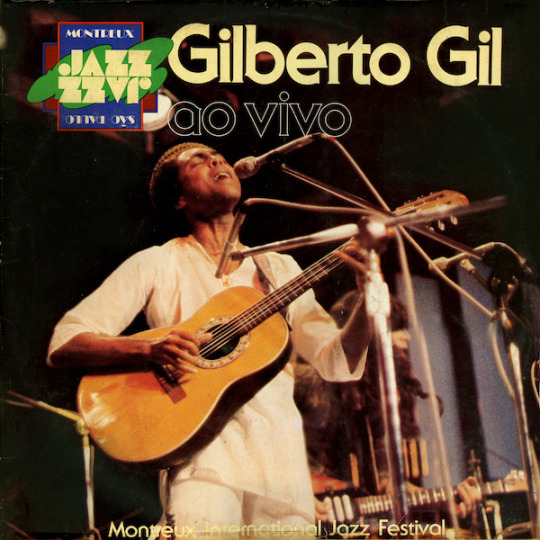
Ça crée un appel d’air : en 84, énorme festival brésilien à nice, 30 000 personnes, la même année, Caetano Veloso et Djavan remplissent l’Olympia ; l’année suivante, les deux piliers de la bossa nova João Gilberto et Tom Jobim sont à la même affiche de Montreux (mais pas ensemble sur scène, ils sont fâchés !). En 1986, c’est l’année France-Brésil, lancée par Jack Lang, énorme plateau entre le Zénith et La Villette : Maria Bethânia, Baden Powell, Gilberto Gil, Gal Costa, Paulinho da Viola, Paulo Moura, plus un bal Nordeste avec le mythique Luiz Gonzaga, Alceu Valença, Moraes Moreira… Enfin, en fin des 80’s, une mémorable tournée européenne des festivals estivaux que j’ai eu l’honneur de monter avec Caramba, avec João Gilberto, qui pour l’unique fois de sa vie va assurer jusqu’au bout les dix concerts programmés (en vingt jours), plus à la même affiche Caetano Veloso, João Bosco, Carlinhos Brown et Moreno Veloso. Inouï, inoubliable.

Et la télé dans tout ça ? La télévision brésilienne est depuis les 60’s un instrument de culture aussi puissant que l’école, à la fois immédiat, libérateur et réducteur, voire véhicule d’intox. Elle débarque en temps réel dans les foyers brésiliens, et c’est aussi le canal historique de la musique des 60’s, avec ses festivals de chansons, interrompus par la censure militaire pendant quasiment toute la décennie suivante (voir « Puissance de la musique »). Nouveauté dans le paysage à l’orée des 80’s, c’est T.V. Globo et son Niagara de telenovelas, production maison, qui dominent le paysage télévisuel. Globo réhabilite le festival de chansons en 80, mais ça s’arrête là, sans doute pas assez de parts de marché pour la musique, l’époque a changé, c’est le marketing qui domine. Justement, voilà une idée astucieuse, inclure les nouveautés dans la B.O. des telenovelas et en sortir à chaque fois un disque… sur le label maison, Som Livre. Les majors se battent pour y placer leurs artistes, quitte à abandonner leurs droits pour la compilation, parce que, immanquablement, ça fera vendre des albums du chanteur (ou groupe). Business qui s’installe durablement, dès la fin des 80’s, on aura la compilation Brésil et la compilation artistes internationaux pour chaque novela. Télé et industrie du disque font bon ménage…

La décennie s’achève par la première élection présidentielle au suffrage universel. L’élu s’appelle Fernando Collor de Mello, il bat un syndicaliste issu des luttes ouvrières, Luiz Inacio Lula da Silva. Oui, Lula. Sa première tentative ! Collor, c’est un libéral assumé, dents blanches et look de gendre parfait, qui promet aux Brésiliens un futur radieux. S’ils savaient…
LES ANNÉES 90 ► PULSATIONS DES MÉGAPOLES
« La fin de la vieille politique, féodale ou populiste », titre la presse, qui annonce avec Fernando Collor l’ère d’un Kennedy de l’hémisphère sud. Fadaises ! En à peine deux ans, le président et son clan vont organiser méthodiquement le pillage du pays, avec détournements colossaux, corruption éhontée et trafics en tous genres. Ce nabab d’un nouveau genre démissionne fin 92, évitant de justesse la destitution. Bis repetita, c’est le vice-président, Itamar Franco, qui prend les rênes du pays. La (vraie) démocratie, c’est pour (encore) plus tard. Il y a quand même du mieux, de ce point de vue, avec les deux mandats successifs de Fernando Henrique Cardoso, social-démocrate, ancien exilé politique, qui pourtant, peu à peu, gouvernera avec des conservateurs. Ceci dit, le Brésil avance à petits pas (politiques) et à grands pas (économiques).
En attendant, coup de projecteur sur deux mégalopoles, 36 millions d’habitants à elles deux, Rio, la « Cidade maravilha » (point besoin de traduire !) et São Paulo, la bosseuse insomniaque. Plus un focus sur Recife, autre spot du Nordeste qui, après Salvador, pointe son nez.

En attendant, à Rio c’est la montée en puissance du baile funk. Toute une histoire, ce baile qui n’a de funk que le nom. Ça commence dans les 70’s, quand une poignée de DJ filent aux USA tous les mois s’approvisionner en maxis de black music, en bonne partie funk. New York, bien sûr, mais aussi Miami : c’est moins loin, mais le beat y est progressivement plus musclé, c’est le Miami Bass, electro sauce piquante. C’est tout un commerce qui fleurit, des revendeurs font l’aller-retour dans le week-end pour approvisionner les DJ qui samplent, trafiquent le son dans leur home studio. Ce funk devient l’autre tempo des favelas, et c’est souvent la fraction jeune des écoles de samba qui, troquant les tambours pour un beat synthétique, s’empare du marché.
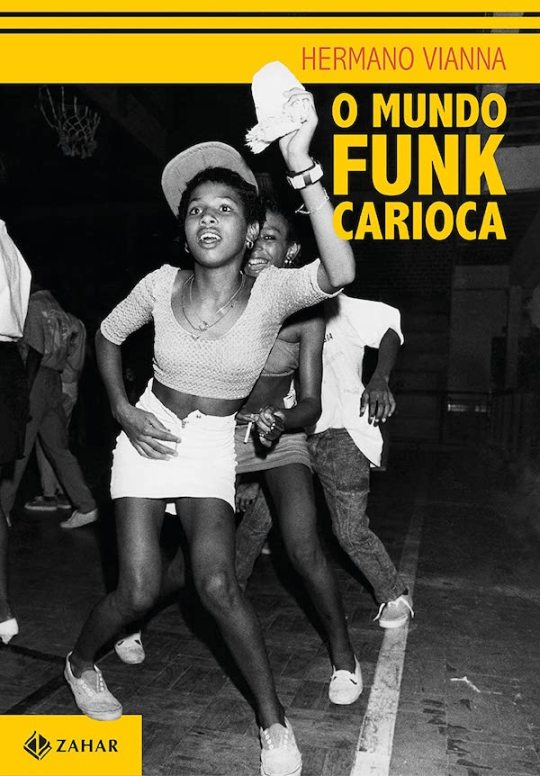
Hermano Vianna, sociologue de terrain et journaliste musical, a fait les comptes : dès les années 80, il y avait 700 bals funk chaque week-end réunissant environ un million de personnes, dont une centaine comptait de 6 à 10 000 participants, la grande majorité des noirs. et de se demander, dans son livre O Mundo Do Funk Carioca, « comment un tel phénomène peut se produire dans ma ville sans que ni moi ni mes amis ne s’en rendent compte ? Pourquoi tant de monde, pourquoi cette magie ? » et de répondre, un peu plus loin : « Ce funk a la capacité de devenir un facteur de paix sociale et de développement culturel de Rio. Ce n’est pas tous les jours qu’une ville invente une musique si puissante, capable de faire danser tout le monde (et bientôt le monde entier) dans leurs favelas natales. » Le funk carioca, comme on l’appelle aussi, se diffuse dans tout le Brésil urbain. Les années passant, les jeunes de la zone sud (les beaux quartiers de Rio) s’y aventurent. Évidemment, les caïds du deal d’herbe ou de coke flairent vite la pompe à fric, d’où certaines soirées où ça défouraille entre gangs pour prendre le contrôle du business. Mais les rares tentatives d’interdiction des autorités font un gros flop. Et ça reste un concours de frime, gros son, gros calibres, gros seins. Eh oui ! De plus en plus, dans les home studios des favelas, on pose des lyrics, en portugais bien sûr. Textes « explicites » hurlés, comme dans le rap US, soit très sex (putaria), soit apologie des gangs (proibidões, les gros interdits). Le baile funk prospère d’une décennie à l’autre. Le son finira par s’exporter dans les années 2000, via des DJ US comme Diplo. Et on retrouve partout dans le monde ce genre musical, qui reste basique, mixé avec d’autres danses énervées, comme le kuduro angolais et le kwaito sud-africain.

Rio, ce n’est pas que la samba et le bal funk. D’abord, la décennie commence par Rock In Rio 2, dans l’immense stade Maracana, avec en star suprême Prince. Un artiste qui va bien au teint de la « Cidade maravilha ». Mais surtout la ville amorce une mutation de sa vie nocturne. Depuis la bossa nova des 60’s, Copacabana et Ipanema sont les beaux quartiers de la zone sud où ça se passe, du soir au bout de la nuit. Bars, clubs et salles y pullulent. Pour les grands dancefloors, il faut aller plus au sud, São Conrado ou Barra de Tijuca. Et le centre historique, de la Candelaria à Lapa, est sale et délabré. Mais la nuit bohème va renaître, autour de lieux plus ou moins alternatifs comme le Circo Voador ou la Fundição Progresso. Un cirque volant et une fonderie, bigre ! Dans les rues avoisinantes, sous le viaduc du tram qui mène à Santa Teresa, la samba retrouve une place désertée depuis des décennies. Mais toutes sortes de bars et clubs s’ouvrent, souvent des rez-de-chaussée d’immeubles délabrés, usés par le temps. Dancefloors de reggae, bars soul & funk, jazz clubs, dancings electro, bals forró et bien sûr maisons de pagode (la jam de samba), tout ça cohabite en bon voisinage et surtout recrée un pôle étonnant que personne n’a planifié, surtout pas les élus municipaux. Rio a retrouvé sa nuit bohème du début du XXe siècle.

São Paulo n’est pas aguicheuse comme Rio de Janeiro, n’est pas sexy ou tropicale comme Salvador ni néo-roots comme Recife. En plus, il n’y a pas la mer, on bosse à SP, d’ailleurs on y traite 60 % des affaires de tout le pays. Vingt et un millions d’habitants, sixième ville du monde, pollution terrible et embouteillages phénoménaux, c’est le New York de l’autre hémisphère. Avec sa nuit underground, à nulle autre pareille, au Brésil, insaisissable par définition. D’abord, chaque communauté y a ses spots, surtout des états du Nordeste avec les bars de forrò ou les lambaterias (!), également les Japonais (arrivés vers 1910-15, ils sont un million dans l’état de SP). Et les tribus culturelles y font leur niche. Déjà, dans les 80’s, la musique d’avant-garde des Arrigô Barnabé ou Itamar Assunção a marqué de son empreinte la mégalopole. Autour de Tom Zé, le Baiane devenu Paulista depuis les 70’s, émerge une scène indie, constamment renouvelée. Par ailleurs, les précurseurs de la DJ culture brésilienne y trouvent leur espace, les DJ Marky et Patife y « cuisinent » une drum’n’bass épicée avant de partir l’exporter en Europe. À la fin des 90’s, d’immenses clubs accueillent les pointures de la scène DJ européenne et nord-américaine. On y reviendra. Et puis il y a la rue, que les Paulistas adorent arpenter comme la rua Augusta. Enfin, un vrai circuit de centres culturels de quartier (SESC), tremplin pour des centaines de groupes ou artistes. São Paulo ne dort jamais.

Sécheresse dans le Sertão (le Nordeste désertique), boulot ne permettant pas de manger à sa faim, désertification des zones forestières, tout concourt à l’exil rural vers les métropoles, voire les mégalopoles. Explosion urbaine à São Paulo et dans les capitales du Nordeste, Salvador, Fortaleza et Recife. C’est cette dernière, capitale de l’état du Pernambuco, qui à son tour commence à s’affirmer comme nouveau pôle musical. Et que c’est riche en rythmes et genres musicaux : le forrò des places de village, le frénétique frevo cuivré du carnaval, le maracatu des anciens esclaves, le xote (prononcez choté), dérivé d’une danse du XVIIIe siècle en Europe, le scottiche ! Grâce à une vraie politique culturelle de la ville (Recife plus son appendice colonial d’Olinda aux rues charmantes) et de l’état, les artistes sont aidés et, derrière la figure étendard de Luiz Gonzaga puis les grands du cru, Alceu Valença et Geraldo Azevedo, toute une génération va poindre à la fin des 90’s et éclater au début du nouveau siècle : Lenine, puissant troubadour électrique, Chico Science & Nação Zumbi, trublion post-rock mort très jeune, Otto, jongleur des mots, Silverio Pessoa, autre bateleur, DJ Dolores avec ses groupes successifs, Siba avec Mestre Ambrosio puis solo, plus tard encore le Spoke Frevo Orchestra, mega-big-band cuivré de carnaval. Tous arpentent régulièrement l’Europe. Leur force commune : un enracinement dans la culture rurale et un désir forcené de l’urbaniser pour mieux la faire revivre et rebondir. Le carnaval de Recife et Olinda est plus que jamais une super-synthèse de tout cela, il n’est pas (encore ?) pollué par le sponsoring, comme celui de Salvador. il reste « ze » spot du XXIe siècle.

LES ANNÉES 2000 ► LULA ET LES BIDOUILLEURS
Fin 2002, Lula est élu président du Brésil. Celui que j’ai vu surgir dans la grève des métallos de São Paulo (lire « Puissance de la musique ») est du genre tenace, c’est en effet sa… quatrième tentative. C’est peu dire que cette première décennie du nouveau millénaire mérite le titre d’années Lula. Deux mandats (il est réélu en 2006), huit ans d’exercice, pas mal pour celui qui a quitté l’école à quatorze ans afin de devenir métallurgiste de l’ABC (la banlieue de São Paulo). Le milieu musical, qui, à ses premières tentatives, était plutôt divisé, l’appuie massivement, participant à de méga-meetings électoraux.

Cette fois, pas d’hymne, mais un chanteur comme ministre de la culture, Gilberto Gil. Lula va sortir plus de vingt millions de Brésiliens de la pauvreté pour grossir les rangs de la classe moyenne, il devient un grand de ce monde et séduit jusqu’à Obama, envieux, du coup : « J’aime ce mec, il est l’homme politique le plus populaire de la terre. » Incroyablement populaire au Brésil aussi, même s’il manque la réforme agraire et celle de l’éducation, même s’il choisit le barrage de Belo Monte au détriment des terres indigènes. Quant à Gilberto Gil, on se rappellera les échanges avec l’Afrique lusophone, ses efforts sur l’enseignement de la musique : beaucoup et peu à la fois, mais avec un budget riquiqui…

Le hip hop a envahi la planète et le Brésil n’échappe pas à la déferlante. Depuis les années 80, à São Paulo, puis à Rio, puis dans le Brésil entier, le street art fait partie du paysage, côté danse, graffs et tags, le pays est à la pointe. Le rap suit, Racionais MC à São Paulo, Planet Hemp d’où sort Marcelo D2, ou encore Black Alien & Speed (remixés par Fatboy Slim) à Rio. Et encore Instituto avec Bnegão, Rappin’ Hood. Avec contenu social, pro-fumette et anti-flics, comme partout ailleurs. Évidemment, des ponts existent aussi avec le baile funk, version lyrics plus crus, souvent sexe… et sexistes. Mais, tendance bien brésilienne, il existe une nette propension à mixer le rap avec les musiques du pays : samba bien sûr, dans le Nordeste, avec le repente, la chanson à répondre des places de village. Dernier exemple en date, Criolo, aussi bien rappeur que sambiste : il partage la scène avec Caetano Veloso et voilà que Chico Buarque lui-même esquisse un rap sur scène (si, si !) en hommage à Criolo, qui le salue ainsi : « Bienvenue au club, grand Chico. »

La culture DJ fait l’objet d’un étonnant ping-pong. Car si elle prospère au Brésil depuis le milieu des 90’s, elle inspire nombre de compilateurs et surtout créateurs ailleurs, essentiellement en Europe (et au Japon). C’est que samba et bossa sont une bonne base pour les aventures electro, ce que valorise Gilles Peterson à Londres d’abord dans la nébuleuse acid jazz, avec ses compilations ou son programme radio Worldwide, sur BBC 1 et Nova en France. Et ce que reprennent à leur compte groupes et DJ, producteurs et remixeurs tels Jazzanova et Rainer Trüby en Allemagne, Smoke City, 4Hero ou Ballistic Brothers en Angleterre, Zuco 103 en Hollande, Nicola Conte en Italie. Du coup, les diggers courent après les vinyles exhumés de la samba rock ou samba soul des sixties. Et au Brésil, orchestres et DJ brassent leur histoire, comme les Cariocas Bossacucanova et le DJ du groupe en solo, Marcelinho da Lua, DJ Tudo le Paulista et DJ Dolores à Recife. Le cycle n’est finalement qu’une répétition adaptée au XXIe siècle du mouvement littéraire anthropophagique des 30’s ou du tropicalisme des 60’s : on malaxe le rituel et l’actuel sans tomber dans le rétro-futurisme, c’est juste moderne. Et c’est ce que vient chercher une belle brochette de Brazil lovers, de Beck à Gogol Bordello en passant par Devendra Banhart.

Comme ailleurs, le marché du disque résiste bien jusqu’à la fin de la première décennie, avant de s’affaisser. Les majors pédalent dans le vide, les gros indépendants du début des années 2000 (Trama) jettent l’éponge, seul Biscoito Fino, qui a récupéré quelques grands noms (Chico Buarque, Maria Bethânia) tient le cap. Pour le reste, beaucoup de prods indépendantes, dans ce domaine, São Paulo est en tête, avec la bande (informelle) des Barbatuques, Céu, Curumin, Lucas Santtana, Iara Renno, mais n’oublions pas dans ce domaine le trio des bricolos de Rio, Moreno Veloso, Kassin et Domenico Lancellotti. Après avoir sorti chacun son album, tous trois se consacrent à ceux des autres.

Toute tentative de dresser un inventaire du paysage musical brésilien est vouée à l’échec. On a éludé la scène rock de Porto Alegre, la vague de choro qui prospère à Brasilia… Chaque coin du Brésil génère un grenier à musique. Alors, concluons sur un courant qui n’est pas des plus glorieux, le dernier avatar de cette sinueuse décennie, le tecno-brega. Le brega, c’est le cheap racoleur assumé, cette fois sur un beat up-tempo, pas loin de l’eurodance. Ça vient de Belem, dans le nord, à l’embouchure de l’amazone. Au-delà du forrò, qui règne dans toutes les campagnes du Brésil, le brega était jusque-là une sorte de country sirupeuse. Autres spécificités de Belem : la lambada, descendue des îles de la Caraïbe via la Guyane, pour chalouper collé serré, et les sound systems mobiles rutilants avec méga-basses ressemblant furieusement à ceux de la Jamaïque et réunissant des milliers de danseurs.

Dernier ingrédient pour faire monter la sauce : les artistes locaux enregistrent dans les home studios des tubes qu’ils relookent à leur manière, pressent artisanalement les skeuds et les revendent à 2 euros sur le marché. Ça part par dizaines de milliers. Les droits d’auteurs, ils ne connaissent même pas. Voici Gaby Amarantos, propulsée star du genre. Clip tourné à la maison, les potes font de la figuration, plan-séquence où la fille potelée et surfardée passe d’une pièce à l’autre ! Oui, ringard, sauf qu’elle a été invitée à défiler au carnaval de Rio 2013, que Kassin, en général sélectif dans ses choix, parle de la produire. Bonde do Rolê, les grands manitous du baile funk, remixent du tecno-brega. Ça sent le business bas de gamme. et tant qu’on est dans le business, évoquons l’affligeant tube d’été planétaire 2008 de Michel Telo, « Ai Se Eu Te Pego » (Oh, si je t’attrape). Juste pour se rappeler que le Brésil musical est aussi capable du pire.

Ceci dit, restons les oreilles aux aguets, le Brésil sera d’actualité en 2014 (Coupe du monde) et 2016 (J.O. à Rio de Janeiro). au milieu de tous les clichés et raccourcis dont on ne manquera pas de nous arroser, préparons-nous à recevoir des effluves de sons neufs. et, pour finir sur une note moins ras du sol, terminons par une chanson audacieuse du nouveau disque de Caetano Veloso, elle s’appelle « Um Comunista » et raconte l’épopée puis la mort, sous la torture des soldats, de Carlos Marighella, leader d’une guérilla d’extrême gauche, en 1969.
youtube
Il termine ainsi la chanson : « Le métis baiane n’obéissait plus aux ordres intéressés qui venaient de Moscou, c’était une lutte romantique lumière et ténèbres, faite de merveilles, d’ennui et d’horreur. Les communistes vivaient leurs rêves. » Caetano qui, dans les 60’s fut hué par les militants de gauche pour son anticonformisme, a choisi le personnage le plus jusqu’au-boutiste pour faire l’éloge du communisme. ou plutôt d’un communiste. Très fort ! Décidément, s’il n’en reste qu’un, ce sera… Caetano Veloso.

#RKK#remykolpakopoul#brasillegrandremix#legrandremix#grandremix#brasil#brazil#bresil#rkkbrasillegrandremix#brasilgrandremix
0 notes
Text
MAX CAVALERA: New SOULFLY Album Has 'That Classic 'Chaos A.D.' Feeling' To It
MAX CAVALERA: New SOULFLY Album Has ‘That Classic ‘Chaos A.D.’ Feeling’ To It
In some of his recent interview, Max Cavalera said that the next SOULFLY album would be “a return to some of the tribal sounds” of the band’s early material, now he told Jack Antonio that record actually ended up taking a different route. He said: “There’s even a song about a Navajo murder that happened on a Navajo reservation — the police killed this young girl and I was really intrigued with…
View On WordPress
1 note
·
View note
Text
Flying High Again Part 3: Flying 101 with T boogs.
This part is for all you birds that are leaving the nest for the first time and all you peeps that are freaked out like I am. Hopefully, this post helps you out and gets you stoked to travel somewhere new. Sorry it took me a while to get to this point, but yeah here goes nothing.
First of all, pack a few days ahead to make sure you don”t forget anything you need. Do not be like me and pack a few hours before you leave. I’ve forgotten my inhaler, deodorant, and as silly as it sounds, I’ve totally forgotten to pack any underwear. What should you pack? Well it depends on what you’re doing, where you are going, and how long you’re going to be. Be sensible when it comes to packing; don’t be a dummy and pack just pants and a hoodie if you’re going to Canada in October. Try your best not too over pack too; I’ve learned the hard way. Nothing is more annoying than walking to a train with an awkwardly huge suitcase, heavy backpack, a laptop bag pulling your hair, and a guitar case while you are fully layered up for the Russian winter. Also, it can get expensive if you pack more than you need. Certain airlines charge $25-$70 for a checked bag, unless you are flying Southwest. Do your research because every airline is different.
The day before you travel, you should check into your flight as early as you can. You want to make sure you have a decent seat on the plane. Southwest has open seating, so the earlier you get on the plane the better seat you can choose. I always try to go for the isle seat on or near the wing of the plane. I choose the isle because I’m a moderately tall human being and it’s nice to stretch out the legs during a four hour flight. Also, I don’t want to have to wake up the person next to me to go to the bathroom. I sit on or near the wing of the plane because it’s the most stable place to sit on the plane. The exit rows have even more space than a regular row of seats. After you check in to your flight and triple check to make sure you packed your underwear, you should brush your teeth and get ready for bed. Or if you’re like me and want to sleep on a plane but can’t (because of obvious reasons). You could stay up all night, watch movies, play video games, whatever you want. This is probably not the best thing to do to your body, but it works for me.
When the day comes for you to venture to the airport and start flapping your wings, take a shower because you stink and no one wants to smell you for an entire flight. I’m kidding (ha ha), taking a warm shower will help make you relax. But it is considerate and makes everyone’s trip better if you don’t smell like ass. Some dude kept farting on the flight to Memphis and it made everyone miserable, so don’t be like that dude. After you take that shower and start to get ready to leave, keep in mind what you’ll be going through when you get to the airport. Let’s say it together! -Airport security! If you want to dress to impress that frisky TSA agent while they’re feeling you up to make sure you aren’t hiding any dangerous substances in your bum, go for it by all means. I just want to get through the line as fast as I can to get to my gate. I usually just throw on some comfortable pajama pants, shoes that are easy to get off and on, and sometimes a hoodie if its cold. I throw everything that isn’t a phone or a wallet in my backpack, it avoids all the mess when you have to empty out your pockets for security. Before you leave the house, make sure you have a nice empty water bottle and some tasty snacks because everything at the airport is overpriced and snacks are essential. If you are like me and you instantly get anxious when you wake up the day of the flight, take a Benadryl or your anxiety medication if your doctor prescribes you any. If it is anxiety medicine just take half of it so you can get to the gate. Once you get to the airport and that lovely TSA agent checks you out and asks what that portable Marshall amp is, immediately check the screen for departures to make sure your gate didn’t change without you knowing. It sucks when you get to your gate and the city is Dallas instead of Phoenix; Yes it’s happened to me but things happen.
Now that you are at your gate, it’s time to cut loose and relax. What I like to do is read a book while listen to some good tunes. Something that also really helps me out before a flight is the checking out www.turbulenceforecast.com. It’s a site that shows real time pilot reports of bumpy rides. It lets me know what I should expect during flights and usually it’s pretty spot on. If you are at least twenty one years of age and you like to rage, you can head to the bar and have a drink. I’ve tested this out first hand, it doesn’t work for me as well. Before my second tour with Lody Kong, I got WASTED at the airport before the flight. I thought I was doing okay but I felt everyone’s eyes stare at me. I was dressed like a bum, stumbling off in a corner with sunglasses on and earbuds blasting deafening music. I ended up sober as the plane took off. These days I buy three or four small bottles of alcoholic beverages at a liquor store (usually assorted flavors of 99 brand vodka). It’s cheaper than drinking on a plane, and I like to share with the people next to me. I like to crack one open and dump half in a bottle of overpriced ginger ale and drink while I wait to board. So by the time I get settled in my seat, I feel pretty good. I keep my backpack with my laptop under the seat in front of me and my headphones in my pocket.
The most important thing you can do is keep still and relax all of your muscles while you are taking off. If you tense up, you will have a bad time during the climb. I like to get to know the people sitting next to me and talk about stuff. Most of the time, they’re a really nice person with an interesting background. I’ve met a girl that was fluent in five different languages, a guy who makes rings out of old bullets that he’s shot while hunting, and I’ve even had an awkward conversation with a small elder Italian woman who spoke little to no English. As you reach your cruising altitude the nice flight attendants will offer you snacks and drinks. Take the snacks if you forgot to pack some, you’ll need to sober up a little when you land so you know where to go and what to do if you have a connecting flight etc etc. But when they offer drinks, don’t ask for a drink with caffeine in it. You want to be drowsy and sleepy during the entire flight, it will make the time cruise by and hopefully youll fall asleep. Cranberry juice mixes very well with 99 Apple Vodka and Ginger ale goes excellent with 99 Grape Vodka, by the way. Don’t forget to offer some to your neighbors before you crack one open for yourself, you don’t want to be rude. If you’re still stressing about the flight take the other half of your medication. I hope you packed a blanket and/or a travel pillow, because you will zonk out very quickly.
About an hour or two before the flight ends, I usually open up my computer and play video games for the remaining time. It makes the time pass so much faster and it also makes couch feel like first class. There’s nothing like playing Skyrim while sipping on Jack and coke thirty thousand feet above the rest of the world. If you are lucky enough to snag an Emergency exit row seat, you can play the entire flight because the exit rows almost always have an electric outlet.
Next thing you know, you’ll be landing in another place far from home. This part can be just as scary, maybe even more terrifying than taking off. Again, the best thing to do is keep still and relax. Read a book (Killing my Insomnia by my bandmate Igor Cavalera Available now on Amazon), fiddle with your phone, do anything to distract you from thinking any stupid thoughts that will freak yourself out. If you have T-Mobile, they give you a free hour of Wifi on any airline that uses Gogo inflight wifi. Pretty neat huh? If none of this is working just remember that we live in an age of incredible technological advances. Planes can land themselves now, not many people know but they do. There is an auto pilot like function that lands the plane safe and sound. Pilots still need to land planes manually every once and a while so they don’t forget how to. I actually learned that fact from the dude who makes bullet rings. I’ve had a few rough landings on flights but that’s always bound to happen. It’s just another pothole in the road.
I hope you enjoyed reading these series of posts. I think it’s kind of silly that I’m trying to give people advice on flying, but whatever. I enjoyed writing these and I hope it helps anyone that has trouble flying. If you have any questions about anything, I’ll be happy to answer them. I don’t really know what I will write about next, but if you have any suggestions let me know. Sorry for my bad grammar and punctuation, if you see any mistakes in my posts. Thanks for reading and I hope you have a great day. :)
1 note
·
View note
Text
340 livros citados em Gilmore Girls
Pois aqui está a lista dos 340 livros lidos e/ou mencionados na série. Divirtam-se!
1. 1984 – George Orwell (já li)
2. As Aventuras de Huckleberry Finn – Mark Twain (quero ler)
3. Alice no País das Maravilhas – Lewis Carroll
4. As Incríveis Aventuras de Kavalier & Clay – Michael Chabon
5. Uma Tragédia Americana – Theodore Dreiser
6. As Cinzas de Ângela – Frank McCourt
7. Anna Karenina – Leon Tolstoy
8. O Diário de Anne Frank – Anne Frank
9. The Archidamian War – Donald Kagan
10. A Arte da Ficção – Henry James
11. A Arte da Guerra – Sun Tzu
12. Enquanto Agonizo – William Faulkner
13. Reparação – Ian McEwan
14. Autobiography of a Face – Lucy Grealy
15. The Awakening – Kate Chopin
16. Babe – Dick King-Smith
17. Backlash: The Undeclared War Against American Women – Susan Faludi
18. Balzac e a Costureirinha Chinesa – Dai Sijie
19. Bel Canto – Ann Patchett
20. A Redoma de Vidro – Sylvia Plath
21. Amada – Toni Morrison
22. Beowulf: A New Verse Translation – Seamus Heaney
23. Bagavadguitá
24. Os Irmãos Bielski – Peter Duffy
25. Bitch in Praise of Difficult Women – Elizabeth Wurtzel
26. A Bolt from the Blue and Other Essays – Mary McCarthy 27. Admirável Mundo Novo – Aldous Huxley
28. Um Lugar Chamado Brick Lane – Monica Ali
29. Brigadoon – Alan Jay Lerner
30. Cândido – Voltaire
31. Os Cantos de Cantuária – Chaucer
32. Carrie, A Estranha – Stephen King
33. Ardil 22 – Joseph Heller
34. O Apanhador no Campo de Centeio – J. D. Salinger
35. A Teia de Charlotte – E. B. White
36. The Children’s Hour – Lillian Hellman
37. Christine – Stephen King
38. Um Conto de Natal – Charles Dickens
39. Laranja Mecânica – Anthony Burgess
40. The Code of the Woosters – P.G. Wodehouse
41. The Collected Stories – Eudora Welty
42. A Comédia dos Erros – William Shakespeare
43. Complete Novels – Dawn Powell
44. The Complete Poems – Anne Sexton
45. Complete Stories – Dorothy Parker
46. Uma Confraria de Tolos – John Kennedy Toole
47. O Conde de Monte Cristo – Alexandre Dumas
48. A Vingança de Bette – Honoré de Balzac
49. Crime e Castigo – Fiodor Dostoievski
50. Pétala Escarlate, Flor Branca – Michel Faber
51. As Bruxas de Salém – Arthur Miller
52. Cão Raivoso – Stephen King
53. O Estranho Caso do Cão Morto – Mark Haddon 54. Filha da Fortuna – Isabel Allende
55. David e Lisa – Dr Theodore Issac Rubin M.D
56. David Copperfield – Charles Dickens
57. O Código da Vinci – Dan Brown
58. Almas Mortas – Nikolai Gogol
59. Os Demônios – Fiodor Dostoievski
60. A Morte de Um Caixeiro-Viajante – Arthur Miller
61. Deenie – Judy Blume
62. The Devil in the White City: Murder, Magic, and Madness at the Fair that Changed America – Erik Larson
63. The Dirt: Confessions of the World’s Most Notorious Rock Band – Tommy Lee, Vince Neil, Mick Mars e Nikki Sixx
64. A Divina Comédia – Dante Alighieri
65. Divinos Segredos – Rebecca Wells
66. Dom Quixote de La Mancha – Miguel Cervantes
67. Conduzindo Miss Daisy – Alfred Uhry
68. O Médico e o Monstro – Robert Louis Stevenson
69. Edgar Allan Poe: Complete Tales & Poems – Edgar Allan Poe
70. Eleanor Roosevelt – Blanche Wiesen Cook
71. O Teste do Ácido do Refresco Elétrico – Tom Wolfe
72. Ella Minnow Pea: A Novel in Letters – Mark Dunn
73. Eloise – Kay Thompson
74. Emily, the Strange: Os Dias Perdidos – Roger Reger
75. Emma – Jane Austen
76. Empire Falls – Richard Russo
77. Encyclopedia Brown: Boy Detective – Donald J. Sobol
78. Ethan Frome – Edith Wharton
79. Ética – Spinoza
80. Europe through the Back Door, 2003 – Rick Steves 81. Eva Luna – Isabel Allende
82. Tudo se Ilumina – Jonathan Safran Foer
83. Extravagance – Gary Krist
84. Fahrenheit 451 – Ray Bradbury
85. Fahrenheit 9/11 – Michael Moore
86. The Fall of the Athenian Empire – Donald Kagan
87. Fat Land: How Americans Became the Fattest People in the World – Greg Critser
88. Medo e Delírio em Las Vegas – Hunter S. Thompson
89. A Sociedade do Anel – J. R. R. Tolkien
90. Um Violinista no Telhado – Joseph Stein
91. As Cinco Pessoas que Você Encontra no Céu – Mitch Albom
92. Finnegan’s Wake – James Joyce
93. Fletch Venceu – Gregory McDonald
94. Flowers for Algernon – Daniel Keyes
95. The Fortress of Solitude – Jonathan Lethem
96. A Nascente – Ayn Rand
97. Frankenstein – Mary Shelley
98. Franny e Zooey – J. D. Salinger
99. Sexta-Feira Muito Louca – Mary Rodgers
100. Galápagos – Kurt Vonnegut
101. Problemas de Gênero. Feminismo e Subversão da Identidade – Judith Butler
102. George W. Bushism: The Slate Book of the Accidental Wit and Wisdom of our 43rd President – Jacob Weisberg
103. Gidget – Frederick Kohner
104. Garota, Interrompida – Susanna Kaysen
105. Os Evangelhos Gnósticos – Elaine Pagels
106. O Poderoso Chefão: Livro 1 – Mario Puzo 107. O Deus das Pequenas Coisas – Arundhati Roy
108. Cachinhos Dourados e os Três Ursos – Alvin Granowsky
109. E o Vento Levou – Margaret Mitchell
110. O Bom Soldado – Ford Maddox Ford
111. The Gospel According to Judy Bloom – Judy Bloom
112. A Primeira Noite de um Homem – Charles Webb
113. As Vinhas da Ira – John Steinbeck
114. O Grande Gatsby – F. Scott Fitzgerald
115. Grandes Esperanças – Charles Dickens
116. O Grupo – Mary McCarthy
117. Hamlet – William Shakespeare
118. Harry Potter e o Cálice de Fogo – J. K. Rowling
119. Harry Potter e a Pedra Filosofal – J. K. Rowling
120. A Heartbreaking Work of Staggering Genius – Dave Eggers
121. O Coração das Trevas – Joseph Conrad
122. Helter Skelter: The True Story of the Manson Murders – Vincent Bugliosi e Curt Gentry
123. Henry IV, parte I – William Shakespeare
124. Henry IV, parte II – William Shakespeare
125. Henry V – William Shakespeare
126. Alta Fidelidade – Nick Hornby
127. A História do Declínio e Queda do Império Romano – Edward Gibbon
128. Holidays on Ice: Stories – David Sedaris
129. The Holy Barbarians – Lawrence Lipton
130. Casa de Areia e Névoa – Andre Dubus III
131. A Casa dos Espíritos – Isabel Allende
132. Como Respirar Debaixo D’Água – Julie Orringer 133. Como o Grinch Roubou o Natal – Dr. Seuss
134. How the Light Gets In – M. J. Hyland
135. Uivo – Allen Ginsberg
136. O Corcunda de Notre Dame – Victor Hugo
137. A Ilíada – Homero
138. Confissões de uma Groupie: I’m With the Band – Pamela des Barres
139. A Sangue Frio – Truman Capote
140. Inferno – Dante Alighieri
141. O Vento Será tua Herança – Jerome Lawrence e Robert E. Lee
142. Ironweed – William J. Kennedy
143. It Takes a Village – Hillary Rodham Clinton
144. Jane Eyre – Charlotte Bronte
145. O Clube da Sorte da Alegria – Amy Tan
146. Júlio César – William Shakespeare
147. A Célebre Rã Saltadora do Condado de Cavaleras – Mark Twain
148. A Selva – Upton Sinclair
149. Just a Couple of Days – Tony Vigorito
150. Os Últimos Dias dos Romanov – Robert Alexander
151. Cozinha Confidencial: Uma Aventura nas Entranhas da Culinária* – Anthony Bourdain
152. O Caçador de Pipas – Khaled Hosseini
153. O Amante de Lady Chatterley – D. H. Lawrence
154. The Last Empire: Essays 1992-2000 – Gore Vidal
155. Folhas de Relva – Walt Whitman
156. Lendas da Vida – Steven Pressfield
157. Menos que Zero* – Bret Easton Ellis
158. Cartas a um Jovem Poeta – Rainer Maria Rilken 159. Lies and the Lying Liars Who Tell Them – Al Franken
160. A Vida de Pi – Yann Martel
161. A Pequena Dorrit* – Charles Dickens
162. The Little Locksmith – Katharine Butler Hathaway
163. A Pequena Vendedora de Fósforos – Hans Christian Andersen
164. Mulherzinhas – Louisa May Alcott
165. Vivendo a História – Hillary Rodham Clinton
166. O Senhor das Moscas – William Golding
167. The Lottery: And Other Stories – Shirley Jackson
168. Um Olhar do Paraíso – Alice Sebold
169. Love Story: Uma História de Amor – Erich Segal
170. Macbeth – William Shakespeare
171. Madame Bovary – Gustave Flaubert
172. The Manticore – Robertson Davies
173. A Maratona da Morte – William Goldman
174. O Mestre e Margarida – Mikhail Bulgakov
175. Memórias de uma Moça Bem Comportada – Simone de Beauvoir
176. Memoirs of General W. T. Sherman – William Tecumseh Sherman
177. Eu Falar Bonito Um Dia – David Sedaris
178. The Meaning of Consuelo – Judith Ortiz Cofer
179. Mencken’s Chrestomathy – H. R. Mencken
180. As Alegres Matronas de Windsor – William Shakespeare
181. A Metamorfose – Franz Kafka
182. Middlesex – Jeffrey Eugenides
183. O Milagre de Anne Sullivan – William Gibson
184. Moby Dick – Herman Melville 185. The Mojo Collection: The Ultimate Music Companion – Jim Irvin
186. Moliere: A Biography – Hobart Chatfield Taylor
187. A Monetary History of the United States – Milton Friedman
188. Senhor Proust – Celeste Albaret
189. A Month Of Sundays: Searching For The Spirit And My Sister – Julie Mars
190. Paris é uma Festa – Ernest Hemingway
191. Mrs. Dalloway – Virginia Woolf
192. Mutiny on the Bounty – Charles Nordhoff e James Norman Hall
193. My Lai 4: A Report on the Massacre and Its Aftermath – Seymour M. Hersh
194. My Life as Author and Editor – H. R. Mencken
195. My Life in Orange: Growing Up with the Guru – Tim Guest
196. Myra Waldo’s Travel and Motoring Guide to Europe, 1978 – Myra Waldo
197. Uma Prova de Amor – Jodi Picoult
198. Os Nus e os Mortos – Norman Mailer
199. O Nome da Rosa – Umberto Eco
200. O Xará – Jhumpa Lahiri
201. The Nanny Diaries – Emma McLaughlin
202. Nervous System: Or, Losing My Mind in Literature – Jan Lars Jensen
203. New Poems of Emily Dickinson – Emily Dickinson
204. The New Way Things Work – David Macaulay
205. Miséria à Americana: vivendo de subemprego nos Estados Unidos – Barbara Ehrenreich
206. A Noite – Elie Wiesel
207. A Abadia de Northanger – Jane Austen
208. The Norton Anthology of Theory and Criticism – William E. Cain, Laurie A. Finke, Barbara E. Johnson, John P. McGowan
209. Novels 1930-1942: Dance Night/Come Back to Sorrento, Turn, Magic Wheel/Angels on Toast/A Time to be Born – Dawn Powell 210. Notas de um Velho Safado – Charles Bukowski
211. Sobre Ratos e Homens – John Steinbeck
212. Meus Dias de Escritor – Tobias Wolff
213. On the Road: Pé na Estrada – Jack Kerouac
214. Um Estranho no Ninho – Ken Kesey
215. Cem Anos de Solidão – Gabriel Garcia Marquez
216. The Opposite of Fate: Memories of a Writing Life – Amy Tan
217. A Noite do Oráculo – Paul Auster
218. Oryx e Crake – Margaret Atwood
219. Otelo – Shakespeare
220. Our Mutual Friend – Charles Dickens
221. The Outbreak of the Peloponnesian War – Donald Kagan
222. Entre Dois Amores – Isak Dinesen
223. Vidas Sem Rumo – S. E. Hinton
224. Uma Passagem para a Índia – E. M. Forster
225. The Peace of Nicias and the Sicilian Expedition – Donald Kagan
226. As Vantagens de ser Invisível – Stephen Chbosky
227. A Caldeira do Diabo – Grace Metalious
228. O Retrato de Dorian Gray – Oscar Wilde
229. Pigs at the Trough – Arianna Huffington
230. Pinóquio – Carlo Collodi
231. Mate-me Por Favor: A História Sem Censura do Punk – Legs McNeil e Gillian McCain
232. Frenesi Polissilábico – Nick Hornby
233. The Portable Dorothy Parker – Dorothy Parker
234. The Portable Nietzsche – Fredrich Nietzche
235. The Price of Loyalty: George W. Bush – the White House, and the Education of Paul O’Neill – Ron Suskind
236. Orgulho e Preconceito – Jane Austen
237. Property – Valerie Martin 238. Pushkin: A Biography – T. J. Binyon
239. Pigmaleão – George Bernard Shaw
240. Quattrocento – James Mckean
241. A Quiet Storm – Rachel Howzell Hall
242. Rapunzel – Os Irmãos Grimm
243. O Corvo – Edgar Allan Poe
244. O Fio da Navalha – W. Somerset Maugham
245. Lendo Lolita em Teerã: Memórias de uma resistência literária – Azar Nafisi
246. Rebecca – Daphne du Maurier
247. Rebecca of Sunnybrook Farm – Kate Douglas Wiggin
248. The Red Tent – Anita Diamant
249. Rescuing Patty Hearst: Memories From a Decade Gone Mad – Virginia Holman
250. O Retorno do Rei – J. R. R. Tolkien
251. R Is for Ricochet – Sue Grafton
252. Rita Hayworth (conto publicado no Brasil no livro Quatro Estações) – Stephen King
253. Robert’s Rules of Order – Henry Robert
254. Roman Holiday – Edith Wharton
255. Romeu e Julieta – William Shakespeare
256. Um Teto Todo Seu – Virginia Woolf
257. Uma Janela para o Amor – E. M. Forster
258. O Bebê de Rosemary – Ira Levin
259. The Rough Guide to Europe – 2003 Edition
260. Sacred Time – Ursula Hegi
261. Santuário – William Faulkner
262. Savage Beauty: The Life of Edna St. Vincent Millay – Nancy Milford
263. Say Goodbye to Daisy Miller – Henry James
264. The Scarecrow of Oz – Frank L. Baum 265. A Letra Escarlate – Nathaniel Hawthorne
266. Seabiscuit: Alma de Herói – Laura Hillenbrand
267. O Segundo Sexo – Simone de Beauvoir
268. A Vida Secreta das Abelhas – Sue Monk Kidd
269. Secrets of the Flesh: A Life of Colette – Judith Thurman
270. Selected Hotels of Europe
271. Selected Letters of Dawn Powell: 1913-1965 – Dawn Powell
272. Razão e Sensibilidade – Jane Austen
273. Uma Ilha de Paz – John Knowles
274. Several Biographies of Winston Churchill
275. Sexus – Henry Miller
276. A Sombra do Vento – Carlos Ruiz Zafón
277. Os Brutos Também Amam – Jack Shaefer
278. O Iluminado – Stephen King
279. Sidarta – Hermann Hesse
280. S Is for Silence – Sue Grafton
281. Matadouro 5 – Kurt Vonnegut
282. Pequena Ilha – Andrea Levy
283. As Neves do Kilimanjaro e Outros Contos – Ernest Hemingway
284. Branca de Neve e Rosa Vermelha – Os Irmãos Grimm
285. Social Origins of Dictatorship and Democracy: Lord and Peasant in the Making of the Modern World – Barrington Moore
286. The Song of Names – Norman Lebrecht
287. Song of the Simple Truth: The Complete Poems of Julia de Burgos – Julia de Burgos
288. The Song Reader – Lisa Tucker
289. 31 Canções – Nick Hornby
290. Os Sonetos – William Shakespeare
291. Sonetos Portugueses – Elizabeth Barrett Browning 292. A Escolha de Sofia – William Styron
293. O Som e a Fúria – William Faulkner
294. Fala, Memória – Vladimir Nabokov
295. Curiosidade Mórbida: a ciência e a vida secreta dos cadáveres – Mary Roach
296. História da Minha Vida – Helen Keller
297. Um Bonde Chamado Desejo – Tennessee Williams
298. Stuart Little – E. B. White
299. O Sol Também se Levanta – Ernest Hemingway
300. No Caminho de Swann – Marcel Proust
301. Swimming with Giants: My Encounters with Whales, Dolphins and Seals – Anne Collett
302. Sybil – Flora Rheta Schreiber
303. Um Conto de Duas Cidades – Charles Dickens
304. Suave é a Noite – F. Scott Fitzgerald
305. Laços de Ternura – Larry McMurtry
306. Time and Again – Jack Finney
307. A Mulher do Viajante no Tempo – Audrey Niffenegger
308. Uma Aventura na Martinica – Ernest Hemingway
309. O Sol é para Todos – Harper Lee
310. Richard III – William Shakespeare
311. Laços Humanos – Betty Smith
312. O Processo – Franz Kafka
313. The True and Outstanding Adventures of the Hunt Sisters – Elisabeth Robinson
314. Truth & Beauty: A Friendship – Ann Patchett
315. A Última Grande Lição: o sentido da vida – Mitch Albom
316. Ulysses – James Joyce
317. Os Diários de Sylvia Plath (1950-1962) – Sylvia Plath
318. A Cabana do Pai Tomás – Harriet Beecher Stowe
319. Bondade – Carol Shields
320. O Vale das Bonecas – Jacqueline Susann
321. The Vanishing Newspaper – Philip Meyers
322. A Feira das Vaidades – William Makepeace Thackeray
323. O Livro do Disco. The Velvet Underground e Nico – Joe Harvard
324. As Virgens Suicidas – Jeffrey Eugenides
325. Esperando Godot – Samuel Beckett
326. Walden ou A Vida nos Bosques – Henry David Thoreau
327. Bambi – Felix Salten
328. Guerra e Paz – Leon Tolstoi
329. We Owe You Nothing, Punk Planet: The Collected Interviews – editado por Daniel Sinker
330. What Colour is Your Parachute? 2005 – Richard Nelson Bolles
331. O que terá acontecido a Baby Jane? – Henry Farrell
332. When the Emperor Was Divine – Julie Otsuka
333. Quem Mexeu no meu Queijo? – Spencer Johnson
334. Quem tem Medo de Virginia Woolf – Edward Albee
335. Wicked: A história não contada das Bruxas de Oz – Gregory Maguire
336. O Mágico de Oz – Frank L. Baum
337. O Morro dos Ventos Uivantes – Emily Bronte
338. Virtude Selvagem – Marjorie Kinnan Rawlings
339. O Ano do Pensamento Mágico – Joan Didion
340. A Bíblia Sagrada
8 notes
·
View notes